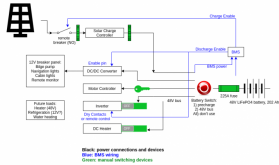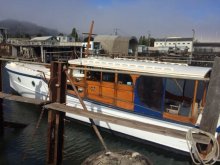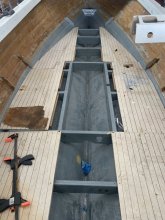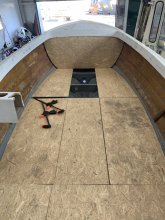I'm still searching for a good BMS for this system as it has to handle a lot. Recommendations here?
I'm using the Orion Jr. 2 BMS. It has lots of options, but is pretty complex and pricey (compared to other options people here talk about. I don't think it's too expensive considering the cost and task of the batteries it's protecting, and I like the flexibility, support, and documentation). There's 90 pages of wiring and operating manuals to read. It's similar to TinyBMS, Rec Q, Batrium, Emus in that these all use external relays and contactors and are more programmable than the simple ones that come with batteries from the Chinese suppliers. Given what we are asking of the BMS, I wanted good English documentation. Several people including myself have found Orion responsive to questions. Emus is in Europe. I know it and Orion, and perhaps others, can communicate over a CANbus with chargers and controllers. Since you haven't bought the BMS or the charger yet, you have a chance to get ones that can communicate which will give more useful control than on/off. But I think there aren't many choices for chargers this powerful, and good for LiFePO4/BMS controllable.
Bilge Pump:
From what I've understood, the bilge pump should bypass the main switch and always stay on. I've bought the Whale Supersub 650 which has automatic on-off switch with lever detection. Not sure how to wire a buypass from the 48V battery bank - DC-converter 12V?
Right. With lead acid batteries, I wired the bilge pump directly to the battery terminals, which I think is common. Lithium feels like a different paradigm and the BMS wants control of all connections. But we already said how it's not allowed to shut off the motor. I can't connect it directly to the 48V battery anyway, and it leads to questions on letting the BMS shut off the 48V/12V converter.
@GVSolar's suggestion to have a 12V battery would solve this.
Nice! You're a pioneer! Like your sketch. I'm still learning to understand wiring diagrams, so I'm keeping it as simple as possible. For now.
Thanks! Similarly, I'm using that sketch to think through the project and it started simpler. It's not a blueprint, but helps me see how things will work and where I need to plan more.
To be honest, I have not even thought about "charge" or pre-charge". I do see that that's something I have to dive deeper into understanding, thanks for pointing that out!
Yeah, I think I found out about it here. There's a lot to learn. I'm glad I did the EV conversion and PV separately from this because there's so much to learn about DIY LiFePO4 batteries, and the non-DIY ones aren't really suited for this application. I thanked my old batteries for dying in the fall before a pandemic winter: this has been a fun project, but wow are there considerations upon considerations, and I'm spending even more time on it than the large amount of time I anticipated.
Thanks! It's great that the fortune from oil can be invested into future technology and renewable energy.
Other countries have made fortunes from oil are not investing it so wisely.
Is it possible to connect the batteries in series with separate containers at 4x3,2V @2880Ah? I'm building the boxes from plywood and epoxy to create waterproof system. I'll might 3D-print a bottom support frame for the batteries as well. See attached drawings.
I think that's totally possible but you want to ensure your longer connections have the same resistance as the shorter ones or the BMS will get confused and think some of the cells are weaker. Orion lets you adjust thi,s at least for the center of the pack where it's common to have a longer bus bar or a fuse, but I can't remember if it allows each link to be individually adjusted.
The other consideration is that these aluminum cased cells are meant to be installed in a "fixture" or lightly compressed before they are ever charged or discharged, including during the initial balancing. This prevents them from bloating a bit which would reduce their cycle life. In mobile applications, the cells also need to be held in place so that they don't move and put stress on their terminals connections. Like "precharge," this forum has plenty of discussion on pack "fixture" and "compression." I think very tightly designed boxes like you are talking about could perform this function if the cells barely fit in when they are new and have a low SoC. Other people are making sure their cells always feel a certain amount of compression force regardless of SoC by using springs, but I'd suggest that's a rabbit hole.












